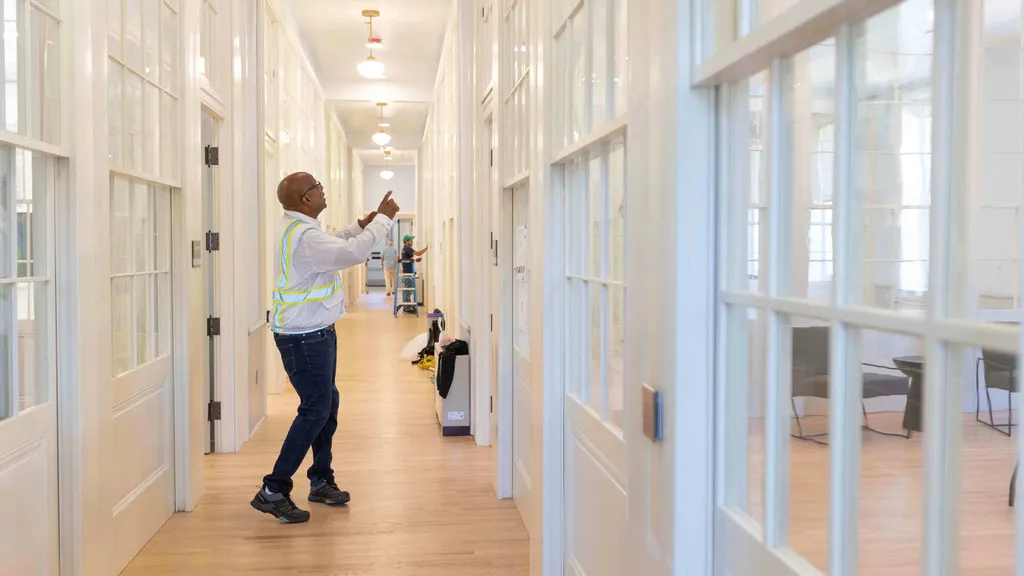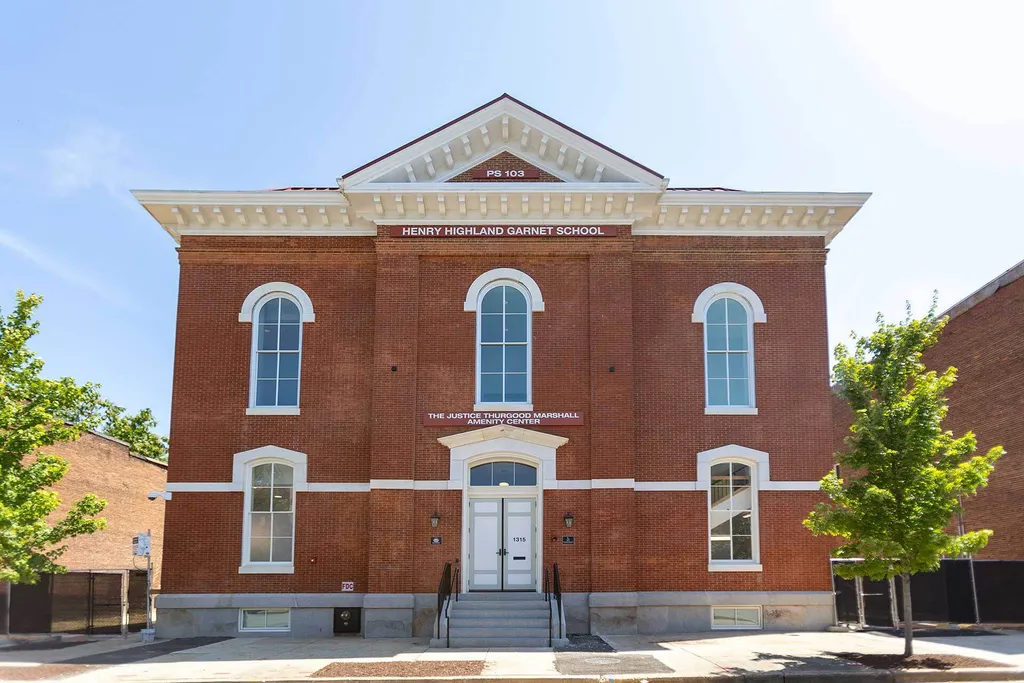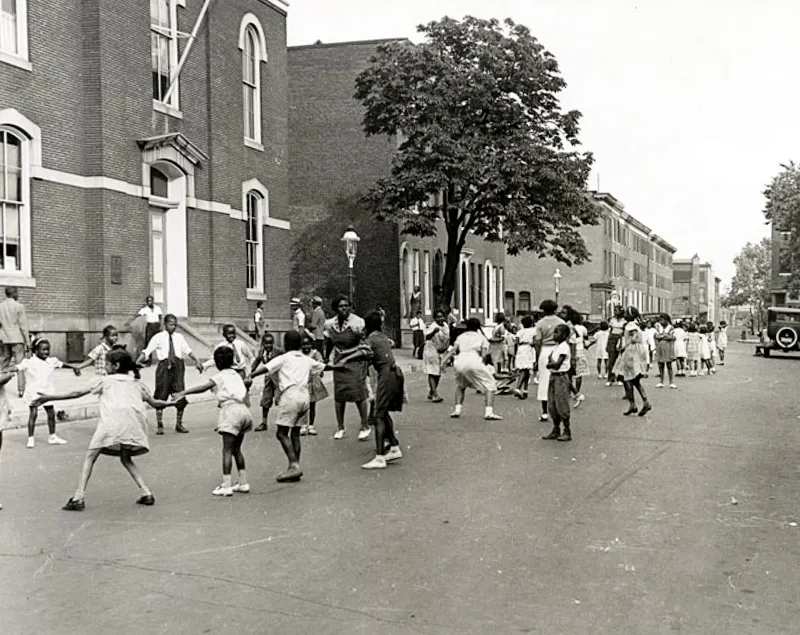- July 01, 2024
- By Sala Levin ’10
As an elementary school student at West Baltimore’s P.S. 103, young Thurgood Marshall was so rambunctious that his teachers often sent him to a quiet room in the basement, where he was instructed to read the U.S. Constitution. By the time he finished elementary school in 1921, the late U.S. Supreme Court justice later said, he’d memorized it.
Now, the historic building has taken on a new identity as a community gathering place, research hub and legal center that carries on his long-standing values, thanks in part to the University of Maryland. The Thurgood Marshall Amenity Center at P.S. 103 is anchored by the College of Behavioral and Social Sciences’ Judge Alexander Williams, Jr. Center for Education, Justice and Ethics, which conducts research and offers programs on criminal justice issues.
A grand opening will be held Monday, the eve of what would have been Marshall’s 116th birthday. Scheduled guests include his son John Marshall, as well as former NBA star Carmelo Anthony and ambassadors from Ghana, Rwanda, Tanzania and Kenya.

The center also includes two other UMD-led facilities: a branch of the Transformative Research and Applied Violence Intervention Lab (TRAVAIL), led by MPower Professor of African American and Africana Studies, Medical Anthropology and Epidemiology Joseph Richardson, and a health and wellness space helmed by Stephen B. Thomas, professor of health policy and management and director of the Center for Health Equity in the School of Public Health.
“We’re excited to help transform that entire area, which has been deprived for so long,” said Williams, a retired U.S. District Court judge who now serves as director of the center bearing his name.
The stately brick school was built on Division Street in 1877 for white children and was designated a “colored” school in 1910. (Musician Cab Calloway and civil rights leader Clarence Mitchell Jr. were among its other students.) By then, the area had become a bedrock of the city’s thriving Black community: Influential writers, lawyers, artists, business owners and political leaders lived in the neighborhood’s rowhouses and mansions and mingled in its clubs.

“This was seen as the premier elementary school for African Americans in West Baltimore,” said the Rev. Al Hathaway, CEO of Beloved Community Services Corp., a development company that bought the building in 2019.
The school, renamed in 1925 after a local abolitionist as the Henry Highland Garnet Public School, was integrated in 1954 and shuttered in 1971. The building became a community center before falling into disuse and disrepair around the 1990s as the neighborhood slid further and further into poverty.
In 2016, a fire destroyed the second floor. Mildew proliferated and a few trees even sprouted in the decrepit space. Three years later, the city put out a request for proposals to redevelop the space, and through a combination of federal and state tax credits and private donors, Beloved Community Services raised $14 million to buy the building. Sarsfield Williams ’94 oversaw its rehabilitation as project manager.
“This great work is really going to serve as a catalyst to prioritize the history and humanity and beauty of the people who reside here,” said Sarsfield Williams, who is not related to Alexander Williams, Jr.
The Judge Williams Center occupies three of the eight restored classrooms on the first floor and offers youth engagement services, a lecture series, classes on ethical public leadership and programming on the criminal justice system. It also continues to operate out of the Seneca Building in College Park.
Richardson’s lab will engage with the community to identify and address issues that lead to gun violence, work with public school students who are at high risk of becoming perpetrators or victims of gun violence, and conduct research on methods for reducing gun violence.

Thomas’ facility, meanwhile, will offer services like hypertension screenings, bloodwork and, thanks to a partnership with UMD psychology Assistant Research Professor Heather Yarger, support for families of children with autism.
The Thurgood Marshall Amenity Center will also house career training in fields like aviation and airport management through a partnership with Baltimore-Washington International Airport, along with exhibits on the history of the building, a speaker series and more.
“I’m just sitting here excited to think about the amazing work and enlightenment and empowerment that will occur—everyone working together to improve the quality of life and provide opportunities to people in West Baltimore,” said Hathaway.
